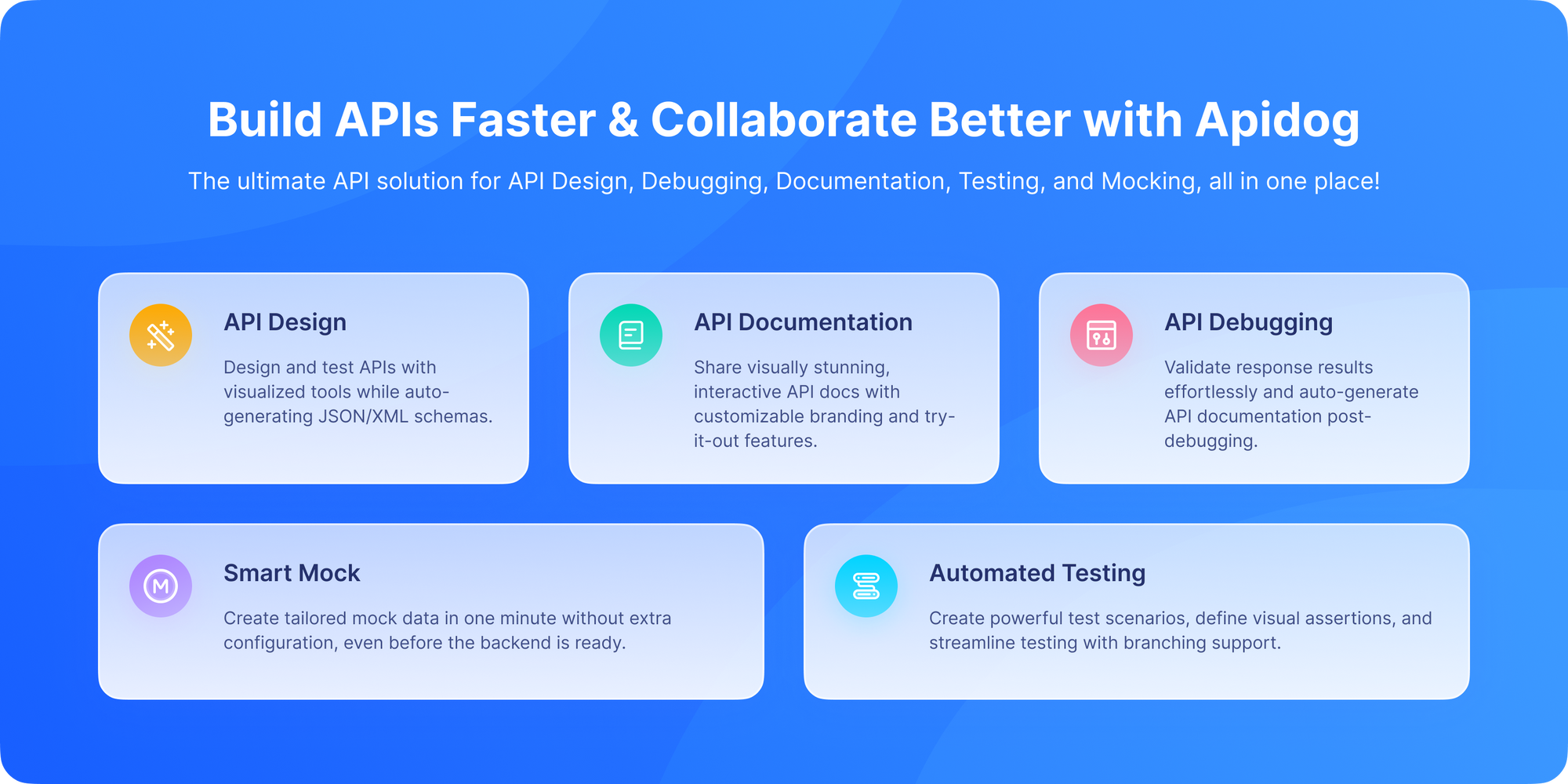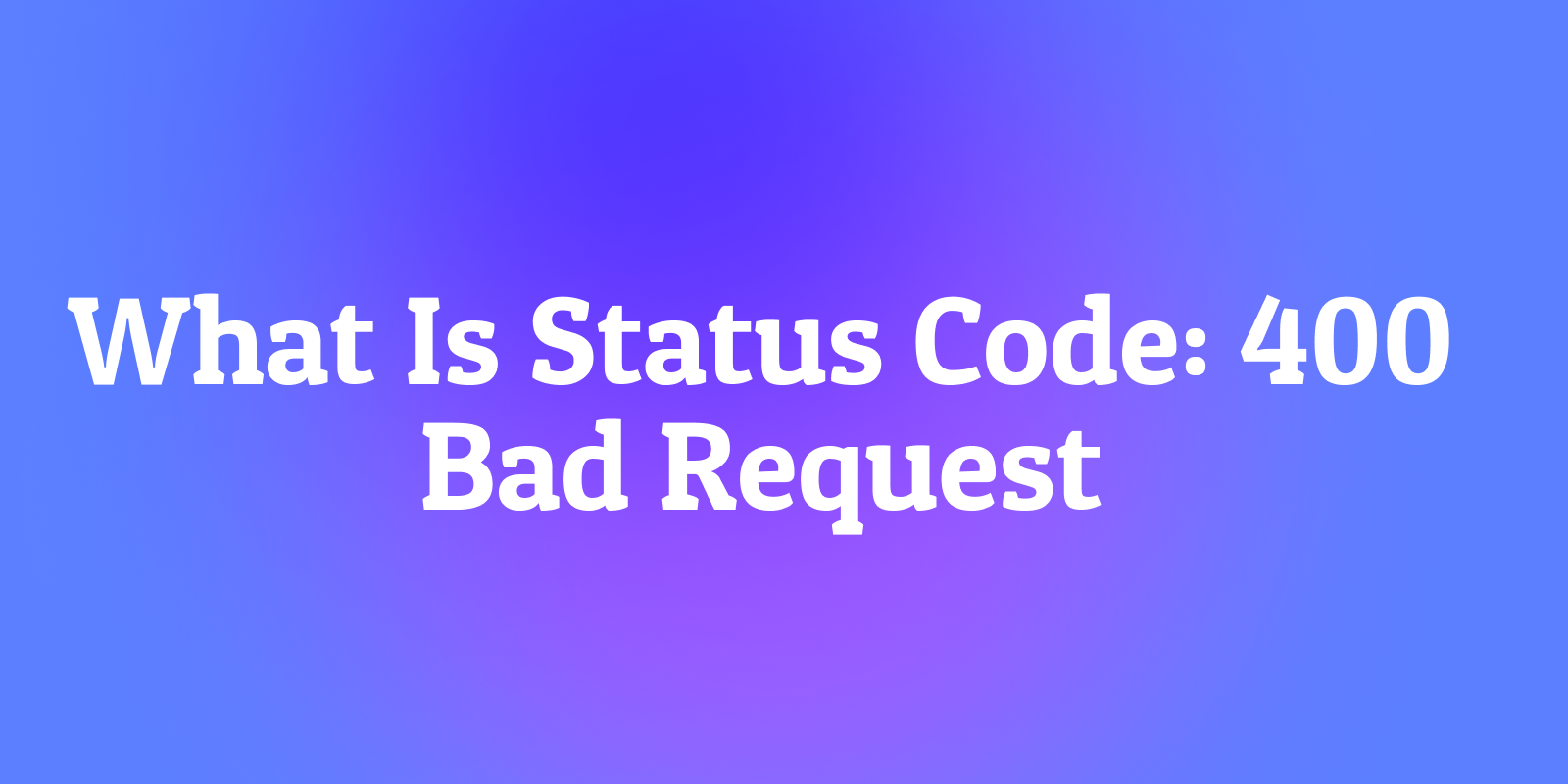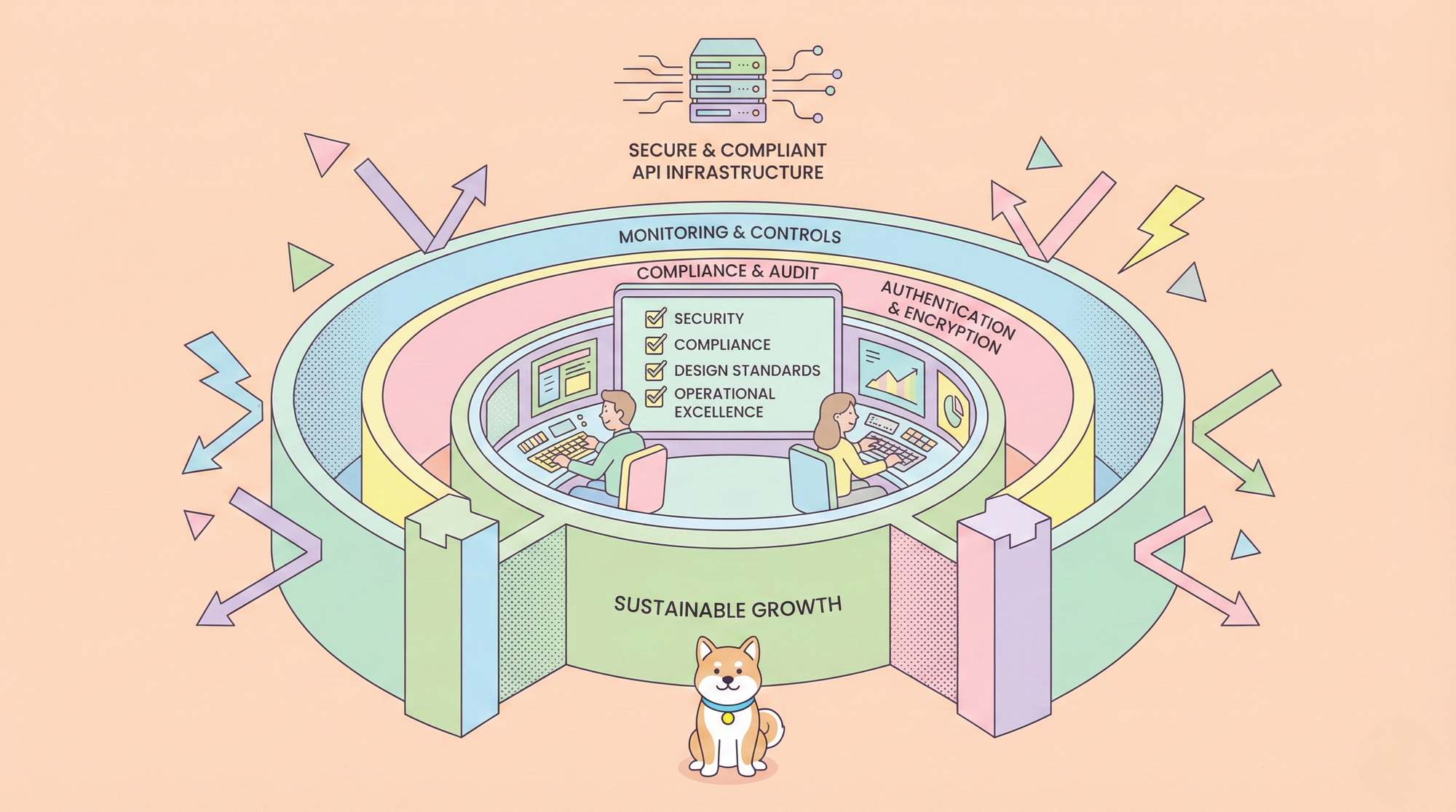If you've spent time browsing the web or working with APIs, you might have encountered the infamous 400 Bad Request status code. While it might seem intimidating at first glance, this status code plays an essential role in web communication, letting clients know that something is wrong with their request. In this blog post, we'll explore what a 400 Bad Request error really means, why it happens, how to fix it, and the most effective ways to handle it all in a friendly, conversational tone.
If you're testing APIs and constantly battling 400 Bad Request errors, a tool like Apidog can save you tons of time. With Apidog, you can simulate requests, debug payloads, and validate headers all in one clean interface. Best part? You can download it for free and start debugging those pesky 400s right away in a smoother and faster process.
Now, let's break down and demystify the 400 Bad Request error!
What Is HTTP Status Code 400 Bad Request?
The 400 Bad Request status code is part of the 4xx class of HTTP responses, which signal client-side errors.
Simply put, the 400 Bad Request status code means that the server cannot or will not process the request because the client sent something incorrect or malformed.
Think of it like this: You’re ordering a pizza, and the store clerk says, "Sorry, I don't understand your order." The "order" in this case is your HTTP request, and the "don't understand" is the 400 Bad Request response.
More specifically, 400 indicates that the server detected client-side errors such as:
- Incorrect syntax in the request
- Malformed request message framing
- Invalid request message parameters
Unlike 500 Internal Server Error, which points to server problems, 400 is all about the client messing up. It's a client error suggesting that the fault lies with the request, not the server.
Why the 400 Error Exists in HTTP
HTTP is a conversation between clients (like browsers or apps) and servers. If the server receives a request it can't interpret, it needs a way to communicate that failure.
That's where 400 Bad Request comes in. Instead of leaving you in the dark, it tells you:
- "I got your request."
- "But something's wrong with it."
Without the 400 status, debugging malformed requests would be a nightmare.
Why Does a 400 Bad Request Error Occur?
Several common scenarios lead to a 400 Bad Request:
- Malformed URL: URLs with invalid characters or improper encoding trigger 400 errors.
- Invalid headers: Missing or malformed HTTP headers can cause servers to reject requests.
- Incorrect request syntax: JSON or XML payloads with syntax errors.
- Oversized requests: Request bodies exceeding server limits.
- Corrupted cookies or cache: Sometimes, bad cookies in browsers cause malformed requests.
- Missing required parameters: APIs expect certain parameters; their absence causes 400s.
- Bad server validations: Custom validation can flag and reject problematic requests.
How Is 400 Different from Other Client Errors?
To place 400 in context, it helps to compare it to related client-side status codes:
| Status Code | Meaning | Example Scenario |
|---|---|---|
| 400 Bad Request | Request syntax or format invalid | Sending malformed JSON in an API call |
| 401 Unauthorized | Authentication needed | Missing or invalid API key |
| 403 Forbidden | Authorization failure | No permission to access the resource |
| 404 Not Found | Requested resource doesn’t exist | Requesting a non-existent API endpoint |
| 422 Unprocessable Entity | Semantic error in request | Valid JSON but invalid data for the API |
While 400 indicates general format or syntactical errors, 422 targets semantic validation issues.
How Do Browsers Handle 400 Bad Request?
When a browser receives a 400 response, it usually shows an error page explaining that the server rejected the request. Sometimes the message will be generic, but many modern servers provide helpful debugging info.
For developers, 400 responses are valuable clues pointing to errors in client-side code or data.
Common Causes of 400 Bad Requests and How to Fix Them
Let’s go through common culprits and their fixes:
1. Malformed URL or Query String
- Cause: Invalid characters, misplaced symbols, or incomplete URL encoding.
- Fix: Validate and encode URLs correctly use URI encoding functions.
2. Invalid or Missing HTTP Headers
- Cause: Missing Content-Type header or malformed Authorization header.
- Fix: Ensure proper headers are included; for JSON APIs, Content-Type should be
application/json.
3. Incorrect Body Syntax
- Cause: Malformed JSON, XML, or form data in request body.
- Fix: Use JSON validators or XML parsers to verify payload correctness before sending.
4. Oversized Request Payloads
- Cause: Request exceeds server-configured size limit.
- Fix: Compress payload or break large requests into smaller chunks.
5. Corrupted Cookies or Cache
- Cause: Cache or cookies stored locally interfere with requests.
- Fix: Clear cookies and cache in browser settings.
6. Missing or Invalid Parameters
- Cause: APIs require parameters that aren’t sent or are invalid.
- Fix: Check API documentation and ensure all required parameters are present and valid.
Real-World Examples of 400 Errors
Let’s look at some situations where you’d see a 400 Bad Request:
- Web Browsing: You try to load a URL with illegal characters (
%zz), and the browser shows “400 Bad Request.” - API Testing: You send JSON with a missing curly brace, and the server returns 400.
- Authentication: You provide a malformed JWT token, and the API rejects it with a 400.
How Developers Can Handle 400 Bad Request Errors Gracefully
- Validate client-side inputs rigorously before sending requests.
- Provide meaningful error messages to users for correction.
- Log request details on servers to diagnose issues.
- Return clear error bodies with specifics on what caused the 400.
- Employ tools like Apidog to simulate requests and inspect server responses.
How to Fix 400 Bad Request in Web Browsers
If you’re just browsing and hit a 400, here are steps to fix it:
- Check the URL → Remove spaces or special characters.
- Clear cookies → Old cookies can trigger 400s.
- Refresh the page → Sometimes it’s a temporary glitch.
- Disable browser extensions → Corrupt headers can come from add-ons.
How to Fix 400 Bad Request in APIs
When dealing with APIs, debugging 400 errors takes a bit more effort. Steps include:
- Validate your payload → Ensure JSON is well-formed.
- Check headers → Correct
Content-TypeandAuthorization. - Inspect URL encoding → Spaces should be
%20. - Use a testing tool → Tools like Apidog can visualize request/response and catch mistakes quickly.
Testing 400 Bad Request With Apidog

Apidog is an incredible tool for API developers to test and debug HTTP errors including 400:
- Create and modify requests with different payloads.
- Inspect headers, request bodies, and response details.
- Reproduce invalid requests intentionally to verify error handling.
- Document and share API error handling strategies effectively.
If you send malformed JSON, Apidog will highlight the error. If headers are missing, you’ll see it immediately. Download Apidog for free to streamline your debugging and test your APIs with confidence.
SEO and 400 Bad Request
Generally, 400 errors do not have a direct impact on SEO, but frequent 400 responses on public-facing URLs could hinder user experience, reduce crawling efficiency, and indirectly affect SEO scores. For SEO, 400 errors are bad news. Unlike 301 redirects, they don’t transfer ranking signals.
If Googlebot constantly sees 400 Bad Request on your site:
- It assumes your page is broken.
- Rankings may drop.
- Crawl budget is wasted.
Fixing 400s fast is essential for SEO health.
400 in REST APIs vs GraphQL APIs
- REST APIs → 400 is common when clients send malformed JSON or wrong query parameters.
- GraphQL APIs → A badly structured query or missing required fields can cause 400.
Both use 400 as a way of saying: “This request is invalid.”
Troubleshooting Tips for 400 Errors
- Replicate the request in development tools.
- Check server logs for detailed error messages.
- Review API documentation carefully.
- Use debugging proxies or tools like Apidog.
- Simplify requests to isolate problematic parts.
Sample 400 Bad Request Response
Here's an example HTTP response for a 400 Bad Request:
textHTTP/1.1 400 Bad Request Content-Type: application/json { "error": "Invalid JSON syntax", "message": "Could not parse request body at line 1 column 5" }
400 vs 500 Errors: What’s the Difference?
- 400 Bad Request is a client-side error, meaning the client sent something wrong.
- 500 Internal Server Error is a server-side error, meaning something went wrong in server processing unrelated to the client request.
Understanding this helps developers identify where to focus debugging.
Security Considerations With 400 Responses
400 errors can be useful for defending against attacks. For example:
- If an attacker sends malformed SQL injection, a 400 stops it early.
- Servers can throttle repeated 400s to prevent abuse.
But be careful: don’t leak too much info in the error message, or attackers may learn how your system validates input.
Conclusion: Mastering HTTP 400 Bad Request for Better APIs
The 400 Bad Request error may seem vague, but once you know the common causes malformed URLs, invalid headers, broken JSON it becomes much easier to debug. HTTP 400 Bad Request may seem like a nuisance, but it’s a crucial part of robust web communication. By recognizing what causes it and how to fix or prevent it, you can significantly improve your API’s reliability, user experience, and development speed.
For developers and testers, using a tool like Apidog can speed up troubleshooting dramatically. Instead of guessing what went wrong, you’ll see exactly how your request looks, what headers are missing, and why the server is rejecting it.
Don’t let 400 errors slow you down. To help you nail API testing including handling 400 errors download Apidog for free. Apidog empowers you to build and maintain high-quality APIs smoothly by giving you deep insights into requests and responses.



